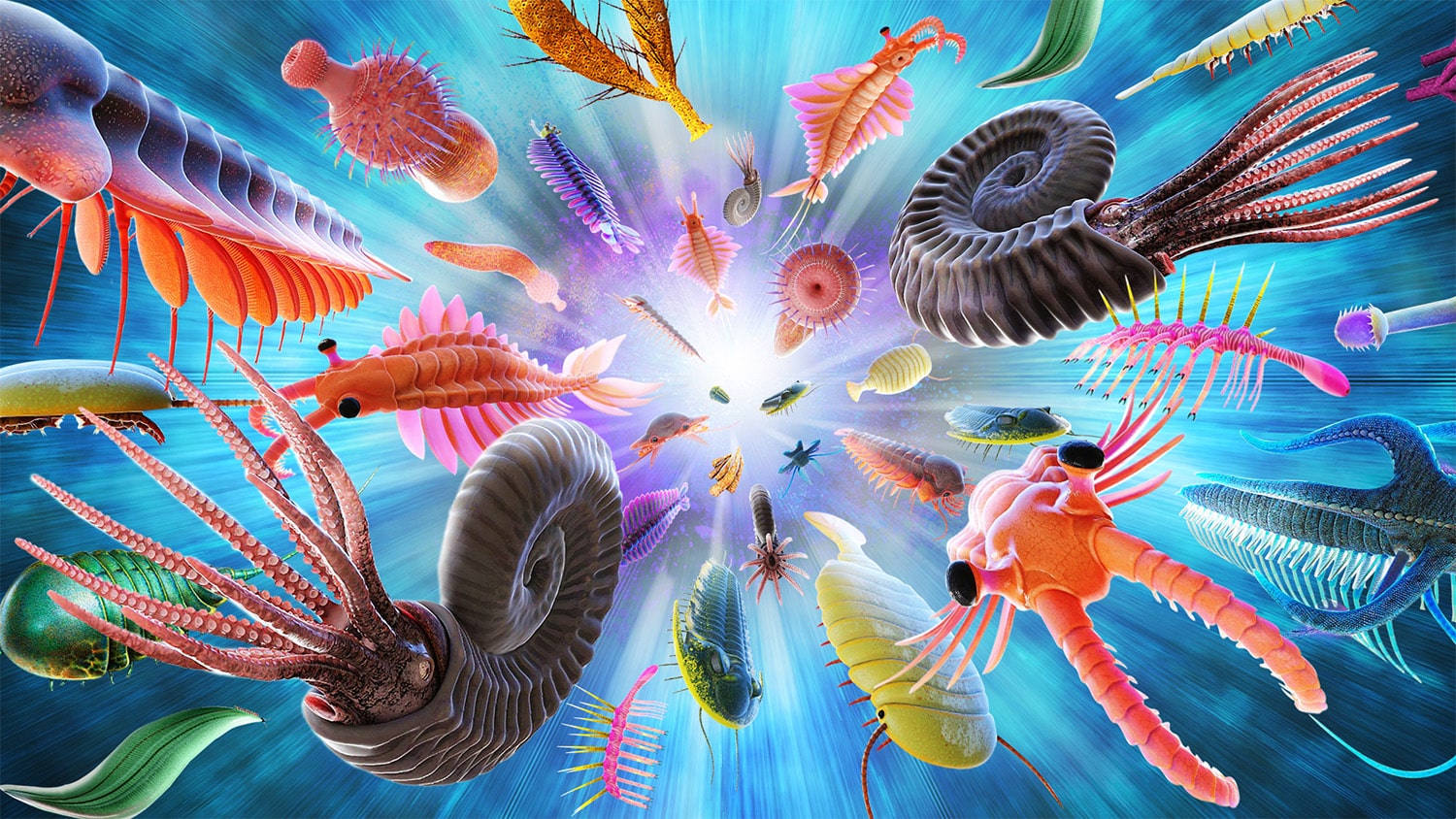
26 interesting facts about Cambrian Explosion
- 👁️ 1111
The Cambrian Explosion refers to a remarkable period in Earth’s history approximately 541 million years ago, during the Cambrian Period, when most major animal phyla appeared in the fossil record. This event marks a pivotal point in the history of life on our planet, showcasing an unprecedented and rapid diversification of life forms in a relatively short geological timeframe. Before the Cambrian Explosion, life on Earth was predominantly composed of simple, unicellular organisms and early multicellular organisms. However, this period saw the emergence of complex organisms and the establishment of ecosystems that would set the stage for the evolution of life as we know it today. Here are 26 interesting and informative facts about the Cambrian Explosion that highlight its significance in the evolutionary timeline.
- The Cambrian Explosion occurred around 541 million years ago, at the beginning of the Cambrian Period.
- This event lasted for about 20 to 25 million years, a relatively short time in geological terms.
- Before the Cambrian Explosion, Earth’s life forms were primarily simple, single-celled organisms.
- The Cambrian Explosion led to the rapid emergence of a wide variety of complex, multicellular organisms.
- Most of the major animal phyla that exist today first appeared during the Cambrian Explosion.
- The Burgess Shale in the Canadian Rockies is one of the most famous fossil sites associated with the Cambrian Explosion.
- Fossils from the Burgess Shale include well-preserved soft-bodied organisms, providing crucial insights into the diversity of life during the Cambrian.
- The Cambrian Explosion saw the first appearance of hard parts, such as shells and exoskeletons, in the animal kingdom.
- The cause of the Cambrian Explosion remains a topic of scientific debate, with theories including changes in the environment, genetics, and the ecosystem.
- The increase in atmospheric oxygen levels is believed to be a significant factor that contributed to the Cambrian Explosion.
- The emergence of predation is thought to have driven the rapid diversification of life forms as organisms developed new ways to avoid being eaten.
- The Cambrian Explosion included the rise of the first true animals, including the ancestors of modern arthropods, mollusks, and chordates.
- The “Cambrian substrate revolution” refers to the change in ocean floor habitats from microbial mats to more complex ecosystems, allowing new niches for organisms.
- Anomalocaris, considered one of the first apex predators, lived during the Cambrian Period.
- The Cambrian Explosion did not just involve animals; it also saw the diversification of algae and the establishment of more complex marine ecosystems.
- The Cambrian Period is divided into four epochs: the Terreneuvian, Series 2, Miaolingian, and Furongian.
- Molecular clock studies suggest that the ancestors of many animal groups diverged earlier than the fossil record indicates, implying a “hidden” history of life before the Cambrian Explosion.
- Trilobites, one of the most successful and diverse groups of early arthropods, emerged during the Cambrian Explosion.
- The evolution of eyes and vision is believed to have accelerated during the Cambrian, enhancing predator-prey dynamics.
- The “Small Shelly Fauna” refers to the appearance of numerous small, hard-bodied organisms at the start of the Cambrian Period.
- Some scientists propose that the breakup of the supercontinent Rodinia contributed to environmental changes that fueled the Cambrian Explosion.
- Ediacaran biota, the complex life forms that existed before the Cambrian Explosion, show the gradual buildup to the explosion of life.
- The Cambrian Explosion marks the first extensive use of biomineralization, the process by which organisms produce minerals to form skeletal structures.
- The rapid diversification of life during the Cambrian Explosion is considered one of the most significant evolutionary events in the history of life on Earth.
- The “Cambrian explosion” term was first coined by paleontologist Harry B. Whittington.
- Despite its significance, the Cambrian Explosion remains one of the most mysterious and debated topics in paleontology and evolutionary biology.
The Cambrian Explosion represents a monumental event in the history of life on Earth, marking the dawn of complex ecosystems and the diverse array of life forms that inhabit our planet today. This period of rapid evolutionary change not only challenges our understanding of biological development but also highlights the intricate and dynamic nature of life’s history. As research continues, each discovery adds a piece to the puzzle of how life evolved from simple organisms to the complex biodiversity we see today, reminding us of the ever-changing and interconnected web of life.











